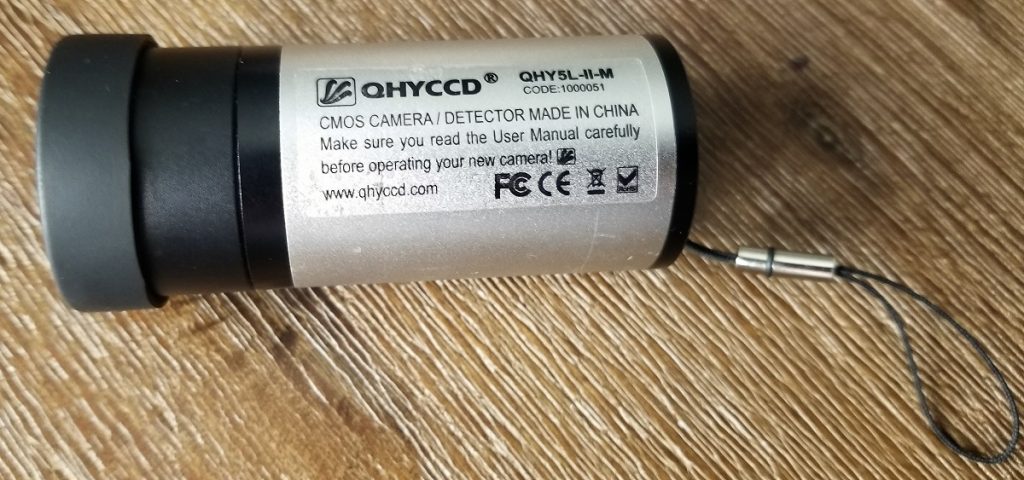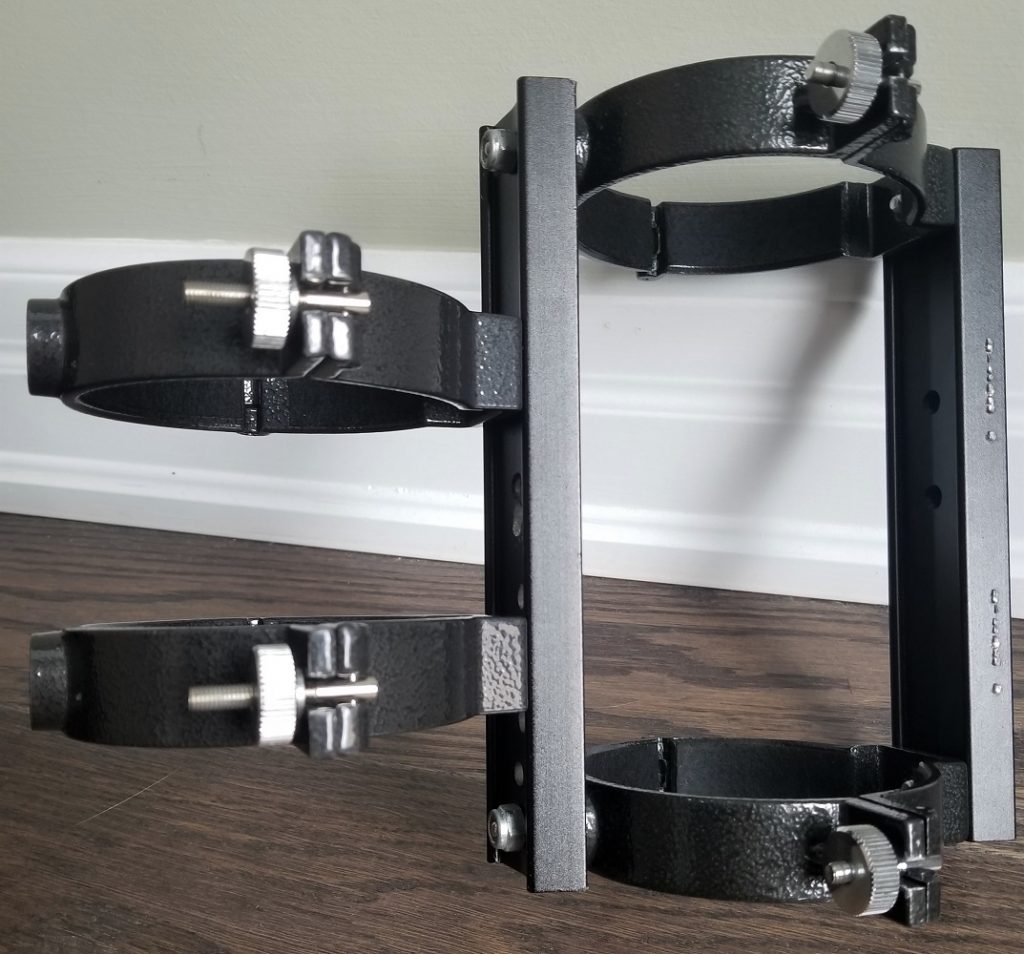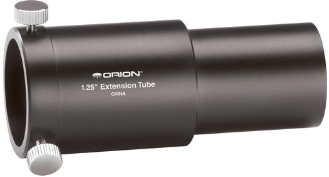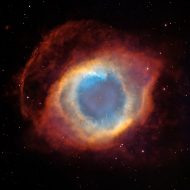Entry level equatorial mounts don’t tack accurately for longer than 60 seconds. It gets even harder to track precisely with longer focal lengths.
Guiding is the answer and my next major goal in improving the astrophotography setup. By guiding, you can keep exposing for much longer times (5-15min and even beyond). That will allow you to drastically increase the amount of detail you can expose in the images, essentially increasing your SNR (signal to noise ratio).
For the guiding camera I chose the popular mono QHY5L-II-M camera. Mono cameras are best for guiding, because the mono sensor captures are more sensitive and can detect more stars in the field of view.

My Orion ST80 will be my guidescope now and I attached it on top the Orion ED80. I had to drill some new holes in the mounting brackets, in order to attach the ST80 rings on top of the ED80 rings. This type of setup is more rigid than the “3 screw” guiding type ring.

Finally, to achieve focus with the guide camera, I purchased a 1.25″ extension tube. Without this, my ST80 drawtube isn’t long enough to achieve focus.

On the software front, I installed PHD as the guiding software. The latest version can be found here: https://openphdguiding.org/
Last Updated on

